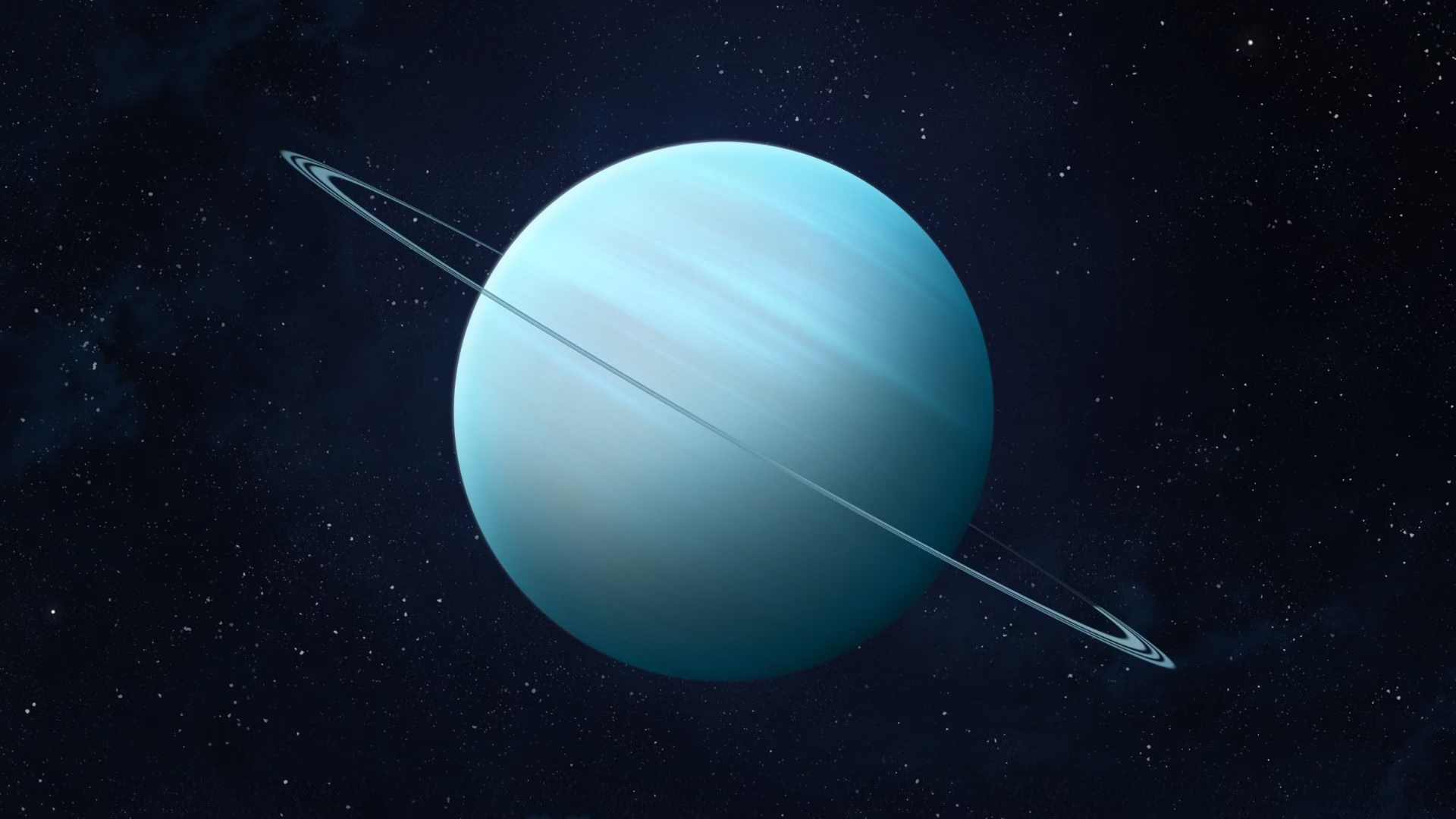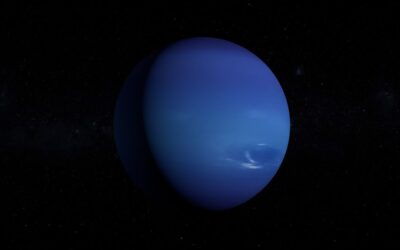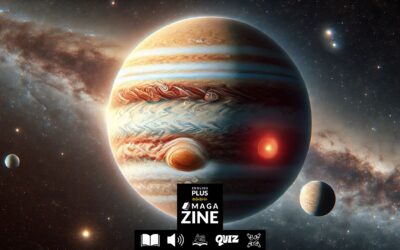In the grand celestial ballet of our solar system, most planets perform with a certain predictable elegance, spinning like well-behaved tops as they orbit the Sun. And then there’s Uranus. This distant, cerulean orb is the solar system’s ultimate nonconformist, the planetary equivalent of that one relative who shows up to a formal dinner in a sideways top hat and insists on rolling instead of walking. Uranus doesn’t just spin; it rolls on its side, a characteristic so peculiar it sets this ice giant apart from all its planetary brethren and offers a tantalizing puzzle for astronomers. Prepare to delve into the chilly, tilted, and altogether curious world of Uranus, a planet that challenges our notions of planetary norms with its sideways stance and enigmatic allure.
The Grand Lean: Unraveling the Mystery of Uranus’s Extreme Axial Tilt
The most defining and utterly bizarre feature of Uranus is its axial tilt. While Earth tilts at a modest 23.5 degrees, giving us our seasons, Uranus has an axial tilt of approximately 98 degrees. This isn’t just a slight lean; it’s a full-blown, “oops-I-fell-over-and-decided-to-stay-this-way” kind of tilt.
What in the Cosmos is Axial Tilt?
Imagine each planet has an invisible pole running through its center, from north to south, around which it spins – this is its rotational axis. Axial tilt, or obliquity, is the angle between this rotational axis and its orbital plane (the flat disc around the Sun on which it orbits). Most planets have relatively minor tilts. Uranus, however, looks like it was knocked sideways. Its equator is nearly at a right angle to its orbit, meaning it essentially orbits the Sun rolling on its side, with its poles alternately pointing towards or away from the Sun.
The Cataclysmic Knockover: Theories Behind the Tilt
So, how did Uranus end up so spectacularly askew? The leading theory points to a cataclysmic event, or series of events, early in the solar system’s history. Scientists hypothesize that one or more massive collisions with an Earth-sized protoplanet, or perhaps several smaller bodies, could have delivered the colossal nudge needed to send Uranus spinning sideways. Imagine a cosmic game of billiards where Uranus was the unfortunate eight ball, struck with enough force to completely alter its orientation. This impact scenario could also help explain some other Uranian quirks, like the unusual orbits of some of its moons and its surprisingly low internal heat emission.
Seasons of Extremes: A 42-Year Day (and Night)
This extreme tilt leads to the most bizarre and protracted seasons in the solar system. Because Uranus takes 84 Earth years to complete one orbit around the Sun, each pole gets around 42 years of continuous sunlight followed by 42 years of perpetual darkness. Picture it: a midsummer day at one of Uranus’s poles lasts for decades, with the Sun appearing to circle high in the sky. Conversely, winter at the opposite pole is an equally long, frigid, and dark affair. The regions near the equator experience a more rapid, albeit still strange, day-night cycle during the equinoxes, when the Sun shines directly over the equator.
Anatomy of an Ice Giant: Peering Through the Pale Blue Haze
Uranus, along with its neighbor Neptune, belongs to a class of planets known as ice giants. This isn’t to say they’re solid balls of ice like giant snowballs, but rather that their composition is dominated by heavier volatile substances – or “ices” – like water (H2O), methane (CH4), and ammonia (NH3), in addition to hydrogen and helium.
A Slushy Mantle and a Rocky Heart
Beneath its gaseous atmosphere, Uranus is believed to have a hot, dense, fluid mantle of these ices surrounding a small, rocky core. The pressures and temperatures within this mantle are so extreme that the “ices” wouldn’t resemble ice as we know it on Earth but would exist in a bizarre, super-pressurized fluid state. It’s a far cry from the gas giants Jupiter and Saturn, which are predominantly hydrogen and helium all the way down to their cores.
The Methane Signature: A Cool Blue Complexion
The serene, pale blue-green hue of Uranus is primarily due to the presence of methane in its atmosphere. Methane gas absorbs red light from the Sun and reflects blue and green light back into space, giving Uranus its distinctive, almost featureless, cyan color when viewed from afar. While its atmosphere is predominantly hydrogen and helium, it’s this methane component that provides its signature look. For a long time, Uranus was considered visually quite bland, a “less interesting” sibling to the dynamic, stormy Neptune. However, more recent observations with advanced telescopes have revealed subtle cloud bands, storms, and atmospheric activity, particularly as the planet approaches its equinoxes.
A Frigid Realm: The Coldest Planet?
Uranus holds the record for the coldest planetary atmosphere in the solar system, with minimum temperatures plummeting to a bone-chilling -224 degrees Celsius (-371 degrees Fahrenheit or 49 Kelvin). Surprisingly, it radiates very little internal heat into space, much less than the other giant planets. This is another Uranian anomaly that scientists are keen to understand. Is it a consequence of its ancient cataclysmic impact, or is there some other mechanism at play that inhibits heat from its core from reaching the surface?
A Retinue of Darkness: Uranus’s Rings and Moons
Like the other giant planets in our solar system, Uranus is not alone; it commands a complex system of rings and a diverse family of moons, each with its own intriguing characteristics.
The Tenuous, Dark Rings
Discovered serendipitously in 1977 when they blocked the light from a distant star, Uranus’s rings are a far cry from Saturn’s bright, icy spectacles. They are incredibly dark, narrow, and composed of relatively large, boulder-sized particles of ice and dust, likely darkened by space weathering or carbonaceous material. There are 13 known rings, with the brightest being the Epsilon ring. Their darkness makes them difficult to observe, a tenuous whisper compared to Saturn’s shout.
Literary Moons and a Fractured Past
Uranus boasts 27 known moons, named not after figures from Greek mythology (as is traditional for most planets, fitting for a planet named after the Greek sky deity Ouranos), but after characters from the works of William Shakespeare and Alexander Pope. This literary naming convention adds a unique charm to the Uranian system. The five largest moons – Miranda, Ariel, Umbriel, Titania, and Oberon – are fascinating worlds in their own right. Miranda, in particular, is a geological marvel, displaying a bizarre, jumbled surface with vast canyons, terraced layers, and a patchwork of different terrains, suggesting a violent, tectonically active past, perhaps even being shattered and reassembled.
A Celestial Newcomer: Discovery and Naming
Unlike the classical planets (Mercury through Saturn) known since antiquity, Uranus was the first planet to be discovered using a telescope, a landmark moment in the history of astronomy.
Herschel’s Serendipitous Sighting
On March 13, 1781, while meticulously cataloging stars, British astronomer William Herschel (assisted by his sister Caroline) stumbled upon an object that didn’t quite behave like a star. It appeared as a small disk and moved relative to the background stars. Initially, he suspected it was a comet, but further observations and calculations by other astronomers, notably Anders Johan Lexell and Johann Elert Bode, confirmed its planetary nature. This serendipitous discovery effectively doubled the known size of the solar system overnight.
What’s in a Name? From Georgium Sidus to Uranus
Naming the new planet proved to be a bit of a kerfuffle. Herschel, in a display of patriotic loyalty, wanted to name it “Georgium Sidus” (George’s Star) after his patron, King George III of Great Britain. This didn’t sit well with astronomers outside of England. Other suggestions included “Neptune” (which later went to another planet) and even “Herschel.” Ultimately, it was Johann Bode who championed the name “Uranus,” the Latinized form of Ouranos, the Greek god of the sky and father of Saturn (Cronus in Greek mythology), thus maintaining the mythological naming tradition. It was a logical choice, as Saturn was the father of Jupiter, and Uranus, in myth, was Saturn’s father. (And yes, cue the inevitable jokes, which astronomers have endured with varying degrees of amusement for centuries. Let’s just say, from a purely mythological standpoint, it fits the lineage.)
Fleeting Visits and Future Hopes: Exploring Uranus
Our direct observational knowledge of Uranus is still relatively limited, primarily stemming from one brief but incredibly fruitful robotic encounter.
The Voyager 2 Flyby: A Glimpse of an Alien World
NASA’s Voyager 2 spacecraft is, to date, the only probe to have visited Uranus, making a close flyby in January 1986. During its brief encounter, Voyager 2 provided stunning images and a wealth of data, discovering 10 new moons, two new rings, and studying Uranus’s unique atmosphere, its bizarrely tilted and offset magnetosphere (magnetic field), and its radiation belts. Much of what we know about the Uranian system comes from this single, fleeting visit.
The Call for an Encore: Future Missions
Uranus and Neptune are now considered high-priority targets for future NASA and ESA missions. An orbiter mission to Uranus could revolutionize our understanding of ice giants, which are now known to be common types of exoplanets around other stars. Such a mission would aim to study its atmosphere in detail, investigate its internal structure and that mysterious lack of internal heat, explore its rings and moons more thoroughly, and try to definitively solve the puzzle of its extreme axial tilt.
The Sideways Enigma: An Enduring Celestial Puzzle
Uranus remains one of the most enigmatic and compelling planets in our solar system. Its sideways orientation, frigid temperatures, unusual magnetic field, and the violent history hinted at by its moons and tilt make it a natural laboratory for understanding planetary formation, evolution, and the dramatic events that can shape entire worlds. It’s a pale blue dot with a distinctly quirky personality, a testament to the fact that the cosmos is far stranger and more wonderful than we can often imagine. As we continue to gaze outwards, Uranus beckons, a tilted titan promising more secrets to unveil.
Let’s Learn Vocabulary in Context
Hello! After that journey to the chilly, sideways world of Uranus, let’s take a moment to look more closely at some of the words and phrases we used. Understanding these terms can really help you describe complex scientific ideas, and many of them are also super useful in everyday language. You’ll find they can add a bit of flair and precision to how you express yourself.
First up, we mentioned Uranus’s extreme “obliquity.” This is a more technical term for axial tilt. Obliquity refers to the angle between a planet’s equatorial plane and its orbital plane, or, equivalently, the angle between its axis of rotation and a line perpendicular to its orbital plane. When we say Uranus has a high obliquity, it means its axis is tilted over a lot compared to its orbit around the Sun. While “axial tilt” is more common, “obliquity” is the term you’ll see in astronomical contexts. You might not use it every day, but understanding it helps when reading about planets. For instance, “Earth’s obliquity of 23.5 degrees is responsible for its seasons.”
We talked about the theory that a “cataclysmic” event caused Uranus’s tilt. Cataclysmic describes something that causes great destruction or sudden violent change. Think of a major earthquake, a massive volcanic eruption, or, in this case, a giant planetary collision. It implies a disastrous and transformative event. You could say, “The asteroid impact had a cataclysmic effect on the dinosaurs,” or even more metaphorically, “The stock market crash was cataclysmic for many investors.” It denotes a change of huge, often destructive, proportions.
Then there’s the idea that the “ices” in Uranus’s mantle exist in a bizarre state, not like ice on Earth, but as part of its “primordial” composition. Primordial means existing at or from the beginning of time; primeval. It suggests something very ancient, belonging to the earliest stages of development. So, the primordial composition of Uranus refers to the materials it was made from when the solar system was first forming. You might talk about the “primordial soup” from which life on Earth is thought to have originated, or “primordial instincts” that are basic and ancient.
We described Uranus’s rings as “tenuous.” If something is tenuous, it means it is very weak or slight; flimsy or insubstantial. It can also mean very slender or fine. So, Uranus’s rings are faint and not very dense, unlike Saturn’s prominent ones. You could use this for abstract things too: “He had a tenuous grasp of the subject,” meaning his understanding was weak. Or, “The connection between the two events was rather tenuous,” meaning it was not a strong or clear link.
The discovery of Uranus by William Herschel was described as “serendipitous.” Serendipitous means occurring or discovered by chance in a happy or beneficial way. It’s like finding something wonderful when you weren’t even looking for it. Herschel was cataloging stars, not hunting for planets, when he stumbled upon Uranus. “Their meeting was entirely serendipitous; they just happened to be at the same coffee shop at the same time.” It implies a fortunate accident.
We also mentioned Uranus’s tilted and offset “magnetosphere.” A magnetosphere is the region surrounding an astronomical body (like a planet) in which its magnetic field is the dominant influence on the movement of charged particles. Earth has a magnetosphere that protects us from harmful solar wind. Uranus’s magnetosphere is peculiar because it’s not aligned with its rotational axis, making it quite different from Earth’s. This is a more scientific term, but the “-sphere” part tells you it’s a region of influence, like atmosphere or biosphere.
The word “anomaly” was used to describe Uranus’s low internal heat. An anomaly is something that deviates from what is standard, normal, or expected. It’s an oddity, a peculiarity, or an irregularity. Uranus not giving off much internal heat is an anomaly because other giant planets do. “The sudden spike in the data was an anomaly that the researchers couldn’t immediately explain.” It points to something that doesn’t fit the usual pattern.
The article talked about how the serene blue hue of Uranus is due to methane in its atmosphere, which absorbs red light and reflects blue and green. This process of identifying chemical composition by analyzing light is related to “spectroscopy.” While we didn’t use the word directly in that sentence, spectroscopy is the branch of science concerned with the investigation and measurement of spectra produced when matter interacts with or emits electromagnetic radiation. It’s how astronomers figure out what distant stars and planets are made of by looking at the light they emit or reflect. The “fingerprints” in the light reveal the chemical elements present. It’s a cornerstone of modern astronomy.
We also mentioned the “literary naming convention” for Uranus’s moons. A convention is a way in which something is usually done; a custom or an established practice. So, naming planetary moons after mythological figures is a long-standing convention in astronomy. Uranus broke this slightly by using literary characters, but establishing that as the rule for its moons created a new convention for the Uranian system. “Shaking hands when you meet someone is a common social convention in many cultures.”
Finally, the word “enigmatic” was used to describe Uranus as a whole. Enigmatic means difficult to interpret or understand; mysterious. Uranus, with its strange tilt, odd magnetic field, and cold temperature, presents many puzzles, making it enigmatic. “She had an enigmatic smile, leaving him wondering what she was truly thinking.” It suggests a fascinating and puzzling quality.
These words, from the scientific “obliquity” and “magnetosphere” to the more generally applicable “cataclysmic,” “tenuous,” and “enigmatic,” can all help you articulate complex ideas with greater nuance. Practice using them, and you’ll find your ability to describe the world around you, whether it’s a distant planet or an everyday situation, will become much richer!
Vocabulary Quiz
Let’s Discuss
Here are some questions to spark further curiosity and conversation about the enigmatic ice giant, Uranus. We’d love to hear your thoughts and wonderings!
- The Big Whack Theory: The leading theory for Uranus’s extreme tilt is a giant impact. How does this idea of cataclysmic events shaping planets change your perception of the solar system’s history? Can you think of other features on planets (Earth included) that might be remnants of ancient cosmic violence?
- Discuss the idea of the solar system as a dynamic and sometimes violent place, rather than a static, clockwork mechanism. Think about Earth’s Moon formation theory, impact craters, etc.
- Life on a Tilted World: Imagine trying to live on a hypothetical moon of Uranus with its 42-year-long seasons of continuous daylight and then 42 years of darkness. What kind of adaptations might life need to survive such extreme seasonal variations? How would society and culture develop differently?
- Consider energy storage, hibernation, migration, societal structures built around these long cycles, and psychological adaptations.
- Naming Conventions: Uranus’s moons are named after characters from Shakespeare and Pope, breaking the Greco-Roman mythological tradition. What are your thoughts on this? If you discovered a new celestial body, what naming theme would you propose and why?
- Discuss the cultural significance of names. Do you prefer mythological, literary, scientific, or other themes? What makes a good name for a moon or planet?
- The “Boring” Planet Myth: For a long time, Uranus was considered one of the less visually interesting planets. What does this teach us about the limitations of our observational technology at any given time, and the importance of revisiting “known” objects with new tools and perspectives?
- Consider how new discoveries (like its rings or atmospheric activity) changed our view. Are there other scientific areas where initial “boring” labels were overturned by further investigation?
- Why Explore Uranus Again? Given the cost and challenges of space exploration, why do you think scientists are advocating for a dedicated orbiter mission to Uranus? What are the most compelling scientific questions such_a_mission could help answer about ice giants, and potentially about planets around other stars?
- Think about understanding planetary formation, the prevalence of ice giants in the galaxy, Uranus’s unique magnetic field, its internal heat mystery, and the potential for surprising discoveries.
Learn with AI
Disclaimer:
Because we believe in the importance of using AI and all other technological advances in our learning journey, we have decided to add a section called Learn with AI to add yet another perspective to our learning and see if we can learn a thing or two from AI. We mainly use Open AI, but sometimes we try other models as well. We asked AI to read what we said so far about this topic and tell us, as an expert, about other things or perspectives we might have missed and this is what we got in response.
Plus Magazine Discussions
A Deeper Dive
Hello there! It’s always a pleasure to “visit” Uranus, even if only through discussion. The article provided a wonderful overview of this truly peculiar planet. As an astronomer who has long been fascinated by the outer solar system, I can perhaps highlight a few more layers to its intriguing nature.
One aspect that the Voyager 2 flyby hinted at, and which makes Uranus particularly compelling, is its highly unusual magnetic field. Not only is the magnetic axis tilted by a whopping 59 degrees relative to its rotational axis (compare that to Earth’s ~11 degrees), but it’s also significantly offset from the planet’s center. This means the magnetosphere is incredibly lopsided and dynamic, wobbling dramatically as the planet rotates. Understanding why Uranus’s magnetic field is so bizarre – perhaps it’s generated in a relatively shallow, icy convective layer rather than deep in the core like Earth’s – is a key piece in the puzzle of planetary dynamos, especially for ice giants.
Another area of active research and debate is the internal heat flux, or rather, the lack thereof. Uranus emits only slightly more energy than it receives from the Sun, making its net heat flow very low compared to Jupiter, Saturn, and Neptune, which all have strong internal heat sources. Why is Uranus so “cold” internally? One theory, linked to the giant impact hypothesis for its tilt, suggests that the cataclysmic collision might have caused Uranus to lose a significant portion of its primordial heat. Another idea is that its internal structure might have stratified layers that inhibit heat convection from the core to the atmosphere. Solving this would tell us a lot about its formation and evolution.
When we talk about its atmosphere, while methane gives it its blue-green hue, the presence and behavior of other trace gases and aerosols are also critical. For instance, hydrogen sulfide (H2S) has been detected, which, if more concentrated, would give it the aroma of rotten eggs – a rather less charming characteristic! The dynamics of its cloud layers, which form at different altitudes based on temperature and pressure, are also complex. While it appears bland from a distance, close-up observations and new telescope capabilities are revealing more storm activity and banding than previously thought, especially as it moves through its long seasonal cycle. The sluggishness of its atmospheric response to seasonal changes due to its vast distance from the Sun and its long year is also an interesting area of study.
Regarding its moons, the sheer geological diversity of Miranda is truly astounding for such a small body. Its “chevron” features and vast scarps suggest periods of intense geological upheaval, possibly related to tidal heating in the past, or even catastrophic disruption and re-accretion. The other large moons also show evidence of past geological activity, including features that might hint at cryovolcanism (eruptions of icy slush rather than molten rock). These icy satellites are not just inert balls of rock and ice; they are complex worlds.
Finally, the call for a dedicated Uranus Orbiter and Probe mission is driven by the fact that ice giants like Uranus and Neptune are now known to be a very common class of exoplanets. Understanding our own local examples in detail is crucial for interpreting observations of these distant worlds. Such a mission would provide long-term monitoring of its atmosphere, a detailed map of its gravitational and magnetic fields to probe its interior, and close-up studies of its rings and moons. It’s not just about understanding Uranus; it’s about understanding a fundamental type of planet in the cosmos.
Uranus truly is a planet of mysteries. Its sideways tilt is just the most obvious sign that it has a unique and probably violent story to tell, one that continues to challenge and fascinate us.
Frequently Asked Questions
Why is Uranus considered the “topsy-turvy titan” of the solar system?
Uranus earns this nickname primarily due to its extreme axial tilt of approximately 98 degrees. Unlike most planets that spin relatively upright on their axis, Uranus orbits the Sun on its side, essentially rolling along its orbital path. This unique sideways orientation makes it a striking anomaly among the planets and a subject of significant scientific interest.
What is axial tilt and how does Uranus’s extreme tilt affect its seasons?
Axial tilt, or obliquity, is the angle between a planet’s rotational axis (the imaginary line it spins around) and its orbital plane (the flat plane it orbits the Sun on). Uranus’s almost 90-degree tilt results in extraordinary seasons. Because it takes 84 Earth years to complete one orbit, each of its poles experiences around 42 years of continuous sunlight followed by 42 years of perpetual darkness. This creates incredibly long periods of either daylight or nighttime at the poles, with the equatorial regions experiencing a more complex, but still unusual, day-night cycle during equinoxes.
What is the leading theory for why Uranus is tilted on its side?
The prevailing scientific theory suggests that Uranus’s extreme axial tilt was caused by a catastrophic event or series of events early in the solar system’s history. Scientists believe that one or more massive collisions with an Earth-sized protoplanet, or possibly multiple smaller bodies, delivered the significant impact needed to knock Uranus onto its side. This impact scenario is also thought to be connected to other unusual features of the Uranian system, such as the unique orbits of some of its moons and its surprisingly low internal heat emission.
What are “ice giants” and how is Uranus different from gas giants like Jupiter and Saturn in terms of composition?
Ice giants, a category that includes Uranus and Neptune, are planets whose composition is predominantly made up of heavier volatile substances, referred to as “ices.” These ices include water (H2O), methane (CH4), and ammonia (NH3), in addition to hydrogen and helium. Unlike the gas giants Jupiter and Saturn, which are mostly hydrogen and helium throughout their structure, Uranus is believed to have a hot, dense, fluid mantle composed of these “ices” surrounding a relatively small, rocky core.
What gives Uranus its distinct pale blue-green color?
The characteristic pale blue-green hue of Uranus is primarily due to the presence of methane in its atmosphere. Methane gas is effective at absorbing red light from the Sun while reflecting blue and green light back into space. Although the atmosphere is mostly hydrogen and helium, it is this methane component that imparts Uranus with its signature color when viewed from afar.
What are Uranus’s rings like, and how do they compare to Saturn’s?
Uranus possesses a system of rings, but they are very different from Saturn’s bright, prominent rings. Uranus’s rings are notably dark, narrow, and composed of relatively large, boulder-sized particles of ice and dust that are likely darkened by space weathering or carbonaceous material. There are 13 known rings, and their darkness makes them difficult to observe, a significant contrast to Saturn’s extensive and highly reflective icy ring system.
How and when was Uranus discovered?
Uranus was the first planet discovered using a telescope. British astronomer William Herschel, assisted by his sister Caroline, discovered it serendipitously on March 13, 1781, while cataloging stars. Initially, he thought it was a comet, but further observations and calculations by other astronomers confirmed its planetary nature. This discovery significantly expanded the known size of the solar system at the time.
Has any spacecraft visited Uranus, and are there plans for future missions?
Yes, NASA’s Voyager 2 spacecraft is, to date, the only probe to have visited Uranus. It conducted a close flyby in January 1986, providing valuable data and images, and discovering several new moons and rings. Despite this single visit, much of our direct knowledge of Uranus comes from Voyager 2. Uranus and Neptune are now considered high-priority targets for future NASA and European Space Agency (ESA) missions, with proposals for an orbiter mission to Uranus being discussed to further study its atmosphere, internal structure, rings, moons, and the mystery of its extreme tilt.










0 Comments